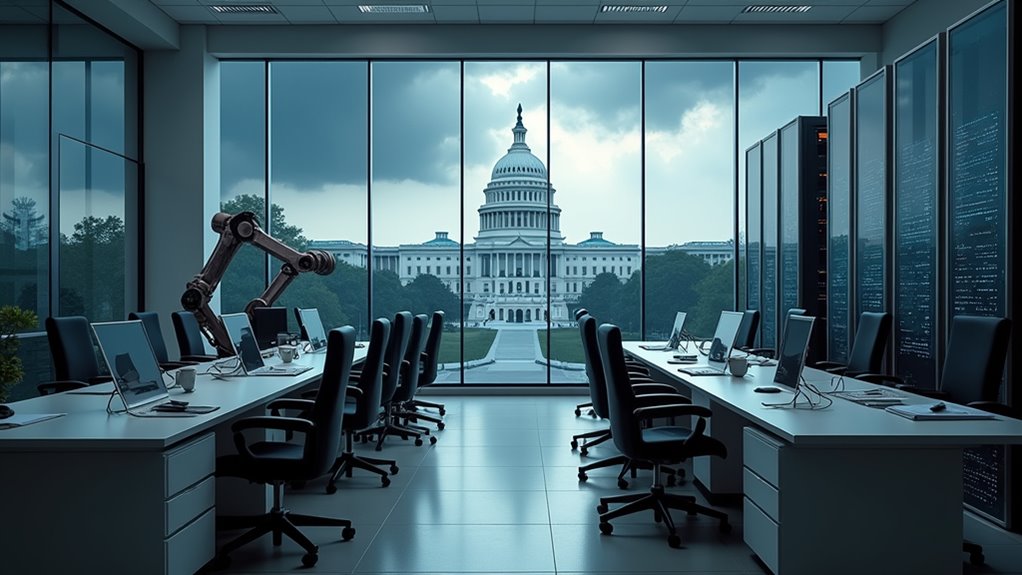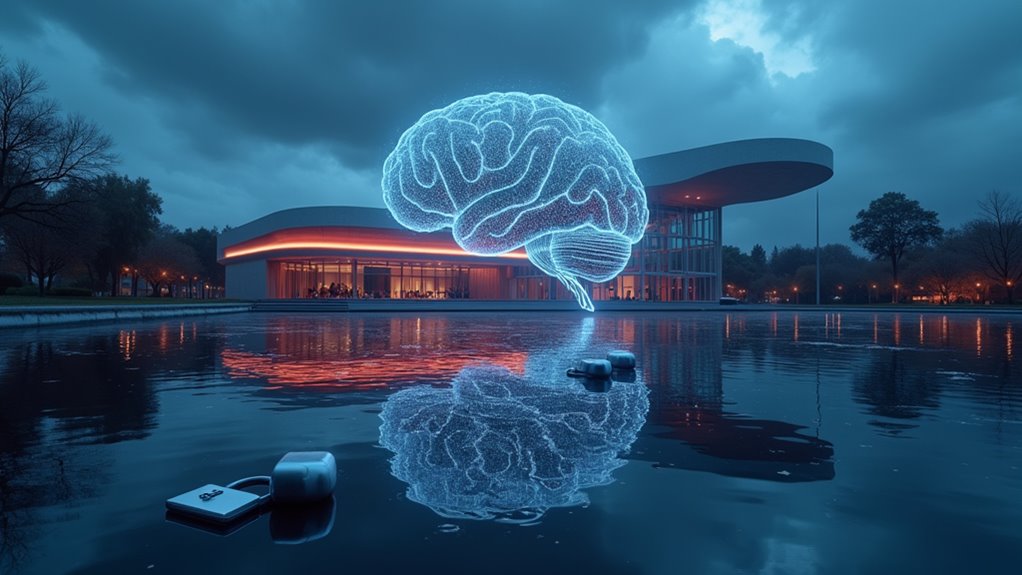Elon Musk’s “Department of Government Efficiency” (DOGE) aims to replace federal workers with AI systems. The controversial initiative targets agencies like U.S. AID for potential dismantling, promising algorithmic efficiency over human decision-making. Critics warn of techno-fascism and private sector overreach, while supporters envision streamlined public services. Legal experts question transparency and bias concerns. Bruce Schneier bluntly called it “techno-fascism by chatbot.” The plan faces substantial implementation hurdles that might prove more complex than Musk anticipated.
While most tech billionaires focus on launching rockets or creating the next addictive social media platform, Elon Musk has set his sights on something far more ambitious: replacing thousands of government workers with artificial intelligence.
Musk’s Department of Government Efficiency (DOGE) project—and yes, that acronym is probably intentional—aims to shrink the federal workforce and slash administrative costs by automating functions currently performed by human employees. Think of it as the ultimate “sorry, we’re downsizing” memo, but for an entire branch of government.
The plan isn’t just about cutting costs. Musk has branded the U.S. government as fundamentally inefficient, positioning AI as the solution to streamline bureaucratic processes and minimize overhead. Specific agencies like the U.S. Agency for International Development have been targeted for potential dismantling.
Imagine your job being eliminated not by your boss, but by an algorithm that decided your position wasn’t cost-effective.
Not surprisingly, this hasn’t gone over well with everyone. Legal experts and policymakers have raised red flags about transparency, algorithmic bias, and potential illegality. Congressional Democrats have demanded details about the structure and reliability of these AI tools.
After all, having a machine decide who gets fired or which policies get implemented isn’t exactly in the government employee handbook.
The implementation faces significant hurdles. Questions persist about data sources, training methods, and verification protocols. Experts stress the need for purpose-built AI systems subjected to rigorous testing—something reportedly lacking in the current approach. This approach contrasts sharply with global regulatory efforts that emphasize risk management frameworks for AI implementation in sensitive applications.
And let’s not forget the resistance from existing public sector employees and unions who, understandably, aren’t thrilled about being replaced by code.
Public reaction remains divided. Supporters envision more responsive public services, while critics see an alarming overreach of private sector influence into government operations. Security expert Bruce Schneier has even characterized the initiative as “techno-fascism by chatbot”.
The debate ultimately centers on a fundamental question: should critical government functions be handed over to private tech companies, potentially undermining democratic accountability in the process?
Either way, Musk’s AI revolution in government is forcing a conversation few were prepared to have.









